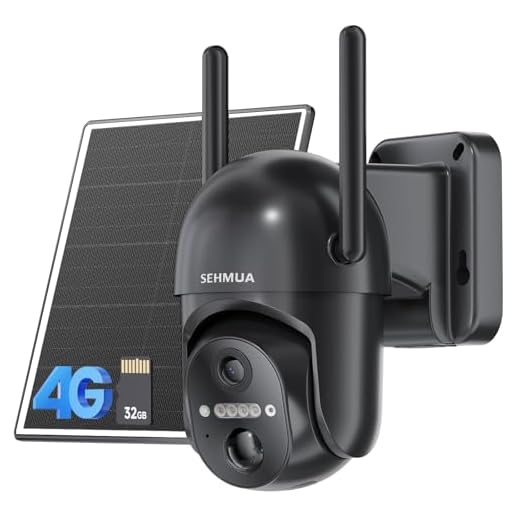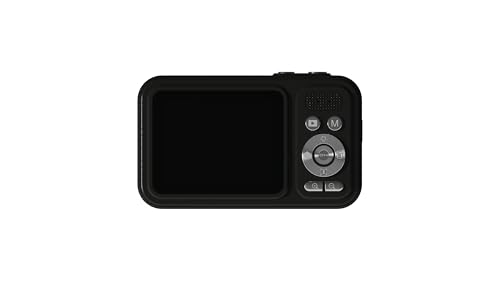




Remote video surveillance is a powerful tool that allows monitoring of a location from a distance. This technology has revolutionized the way we approach security and monitoring, offering real-time insights and peace of mind to individuals and businesses alike.
At the core of remote video surveillance is the use of cameras equipped with internet connectivity. These cameras capture video footage and transmit it over a network to a central monitoring station or a cloud-based server. This enables users to access live video feeds and recordings remotely, using a computer or mobile device.
Remote video surveillance systems often come with advanced features such as motion detection, night vision, and two-way audio communication. These capabilities enhance security and allow for proactive monitoring and response to potential threats.
What is Remote Video Surveillance
Remote video surveillance is a technology that allows users to monitor and record video footage from a distance using cameras and internet-connected devices. This system enables real-time monitoring of an area or property without the need for physical presence on-site.
Remote video surveillance systems typically consist of cameras that capture video footage, a network or internet connection for data transmission, and a viewing device such as a computer, smartphone, or tablet. Users can access the live video feed and recorded footage remotely through a secure online platform or mobile application.
These systems are commonly used for security purposes to monitor homes, businesses, and public spaces. Remote video surveillance can help deter crime, provide evidence in case of incidents, and offer peace of mind to users knowing that their property is being monitored even when they are not physically present.
Benefits of Remote Video Surveillance
1. Increased Security: Remote video surveillance provides around-the-clock monitoring of your property, deterring potential intruders and ensuring a quick response in case of any suspicious activity.
2. Cost-Effective: Compared to hiring security personnel, remote video surveillance is a cost-effective solution that can cover larger areas and provide continuous monitoring without the need for human presence.
3. Real-Time Alerts: With remote video surveillance, you can receive real-time alerts on your smartphone or computer when any unusual activity is detected, allowing you to take immediate action.
4. Peace of Mind: Knowing that your property is being monitored remotely can give you peace of mind, especially when you are away from home or on vacation.
5. Evidence Collection: In the event of a security breach or criminal activity, remote video surveillance can provide valuable evidence to law enforcement authorities, increasing the chances of identifying and apprehending the perpetrators.
Components of Remote Video Surveillance System
Remote video surveillance systems consist of several key components that work together to provide effective monitoring and security. These components include:
- Cameras: Cameras are the most essential component of any surveillance system. They capture video footage of the monitored area and send it to the recording device or monitoring station.
- Recording Device: The recording device stores the video footage captured by the cameras. It can be a DVR (Digital Video Recorder) or an NVR (Network Video Recorder).
- Network Connection: A stable network connection is required to transmit the video footage from the cameras to the recording device or monitoring station. This can be a wired or wireless connection.
- Monitoring Station: The monitoring station is where the live video feeds from the cameras are viewed and monitored in real-time. Security personnel or system operators typically oversee the monitoring station.
- Alert System: An alert system is used to notify users or authorities of any suspicious activity detected by the surveillance system. This can include motion detection alerts, intrusion alarms, and notifications via email or text message.
By integrating these components, remote video surveillance systems provide a comprehensive solution for monitoring and securing residential, commercial, and industrial properties.
How Remote Video Surveillance Works
Remote video surveillance works by utilizing cameras and a network connection to monitor and record activities in real-time from a remote location. The process involves the following steps:
| 1. Camera Placement | Cameras are strategically placed in the area to be monitored, capturing video footage of the surroundings. |
| 2. Video Transmission | The captured video is transmitted over a network connection, usually via the internet, to a central monitoring station or a cloud-based server. |
| 3. Monitoring and Recording | Operators at the monitoring station or software in the cloud-based server view the live video feed, analyze the footage, and record any suspicious activities. |
| 4. Alerts and Notifications | If any unusual activity is detected, alerts are sent to authorities or designated personnel for immediate action. |
Remote video surveillance provides a cost-effective and efficient way to monitor properties, enhance security, and deter criminal activities, making it an essential tool for businesses, homes, and public spaces.
Types of Remote Video Surveillance Systems
Remote video surveillance systems come in various types, each offering unique features and capabilities. Here are some common types of remote video surveillance systems:
| Type | Description |
|---|---|
| Wireless IP Cameras | These cameras connect to the internet wirelessly, allowing remote access and viewing through a computer or mobile device. |
| Cloud-Based Systems | Cloud-based systems store video footage in the cloud, enabling users to access and manage recordings remotely. |
| Network Video Recorders (NVR) | NVR systems record and store video footage from connected cameras, providing centralized management and remote access. |
| Mobile Surveillance Systems | These systems use mobile cameras that can be easily deployed in remote locations for real-time monitoring. |
| Remote Monitoring Services | Some companies offer remote monitoring services where trained professionals oversee video surveillance systems and respond to alarms or incidents. |
Each type of remote video surveillance system has its advantages and is suited to different applications based on the specific needs of the user.
Features of Remote Video Surveillance
Remote video surveillance offers a range of features that make it a valuable tool for monitoring and securing properties. Some key features include:
1. Live Video Streaming
Remote video surveillance systems allow users to access live video feeds from their cameras in real-time, enabling them to monitor their property from anywhere with an internet connection.
2. Motion Detection
Many remote video surveillance systems come equipped with motion detection technology, which alerts users when the camera detects movement within its field of view. This feature helps users quickly identify potential security threats.
These features, along with others like cloud storage, mobile access, and customizable alerts, make remote video surveillance an effective and convenient security solution for both residential and commercial properties.
Future Trends in Remote Video Surveillance
Remote video surveillance is constantly evolving, and there are several exciting trends that are shaping the future of this technology:
| 1. | Artificial Intelligence (AI) Integration |
| 2. | Advanced Analytics and Machine Learning |
| 3. | Cloud-Based Video Storage and Management |
| 4. | Mobile Access and Control |
| 5. | Integration with Internet of Things (IoT) devices |
These trends are expected to revolutionize the way remote video surveillance is conducted, making it more efficient, effective, and user-friendly.






